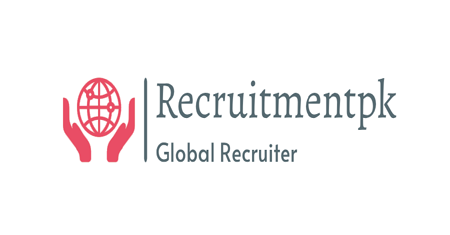Age diversity has long been a topic in workplace equality conversations, but ageism whether subtle or explicit continues to influence hiring and career progression. In recruitment, this bias can limit companies’ access to experienced, knowledgeable professionals and hinder job seekers from securing roles they’re fully qualified for.
Overcoming ageism isn’t just about fairness it’s about maximizing talent, improving team performance, and staying competitive. This guide breaks down practical ways employers and candidates can challenge age-related bias, backed by current trends, strategies, and legal considerations.
Understanding Ageism in Recruitment
Ageism refers to discrimination based on age, often affecting both younger and older job candidates. In hiring, this can appear in multiple forms:
- Job postings with age-coded language like “digital native” or “recent graduate”
- Recruitment bias where assumptions are made about adaptability, tech skills, or energy levels
- Overlooking experienced candidates for fear they’ll demand higher salaries
- Doubting younger candidates’ leadership or decision-making skills
Recent global workforce studies show that ageism can begin affecting candidates as early as their 40s in certain industries. At the same time, younger candidates may face challenges if they’re perceived as inexperienced, regardless of actual skill.
Why Tackling Ageism Benefits Businesses
Recruitment decisions influenced by age bias can backfire. Here’s why inclusive hiring matters:
- Diverse Perspectives – A multi-generational team brings broader problem-solving approaches.
- Knowledge Transfer – Experienced workers can mentor new hires, accelerating learning curves.
- Better Customer Alignment – Businesses serving multiple age demographics benefit from having employees who understand each segment.
- Retention and Loyalty – Older workers often show lower turnover rates, reducing hiring costs.
From a purely strategic standpoint, rejecting qualified candidates due to age limits your talent pool a competitive disadvantage in today’s skills-driven market.
Practical Steps for Employers to Overcome Ageism
1. Audit Your Job Descriptions
Language plays a critical role in shaping the applicant pool. Avoid:
- Terms that imply age preference (“youthful team,” “seasoned only”)
- Requirements not tied to actual job needs (e.g., “must have under 5 years of experience”) Instead, focus on competency-based descriptions that list only essential skills and qualifications.
2. Train Hiring Teams on Unconscious Bias
Recruiters and hiring managers should understand how age bias manifests. Practical training can include:
- Reviewing résumés without birth dates or graduation years
- Using structured interviews with identical questions for all candidates
- Measuring candidates on skill-based assessments instead of perceived “fit” based on age
3. Use Skills-Based Hiring Methods
Online assessment tools, work samples, and case studies can objectively evaluate candidates’ abilities. This reduces reliance on assumptions tied to age.
4. Promote Age Diversity in Employer Branding
Highlight age-inclusive workplaces in recruitment campaigns. This can include employee spotlights across age ranges, or success stories of late-career professionals making an impact.
Strategies for Job Seekers Facing Ageism
1. Modernize Your Résumé
Remove unnecessary details like full graduation dates or outdated skills. Focus on current, relevant expertise and quantify your achievements.
2. Stay Current with Industry Tools & Technology
One of the most common biases against older candidates is the assumption of outdated technical skills. Continuous learning via online courses, certifications, and workshops sends a clear signal that you’re engaged and up to date.
3. Reframe Experience as Value
When discussing career history, focus on impact and outcomes rather than years in the field. Hiring managers respond to measurable results, not timelines.
4. Build a Strong Digital Presence
An active LinkedIn profile with industry-relevant content can counter stereotypes and position you as a thought leader in your domain.
The Role of Recruitment Agencies in Fighting Ageism
Specialized recruitment agencies, such as RecruitmentPk, play a key role in bridging employers and diverse candidates. Here’s how they contribute:
- Screening for Skills First – Agencies prioritize technical and professional competencies over demographic details.
- Educating Employers – They consult with hiring managers to remove age-coded requirements.
- Connecting Candidates to Inclusive Employers – Agencies maintain networks of businesses that value expertise across all age groups.
By partnering with agencies committed to equal opportunity, both candidates and employers can bypass the bias that often persists in direct hiring.
Legal Protections Against Ageism
Depending on the country, anti-discrimination laws may protect workers over a certain age often 40. In the GCC, while legal frameworks vary, multinational companies and progressive local firms are increasingly adopting global anti-bias standards.
Employers should align recruitment processes with:
- Equal Opportunity Policies
- Diversity & Inclusion Training
- Non-Discriminatory Performance Metrics
Job seekers, meanwhile, should be aware of local employment laws and, if applicable, international agreements protecting workplace equality.
Building an Age-Inclusive Workplace Culture
Even after hiring, workplace culture can either reinforce or dismantle age bias. Inclusive companies:
- Offer mentorship programs that work both ways older employees mentoring younger ones and vice versa.
- Avoid language or jokes that stereotype age groups.
- Provide equal access to training and career advancement opportunities regardless of age.
This cultural work ensures that recruitment progress is not undone by internal bias.
Measuring Progress Against Ageism
To truly overcome ageism, companies need to measure their progress. Useful KPIs include:
- Percentage of hires over 40 and under 30
- Retention rates by age group
- Promotion rates across different age brackets
- Employee satisfaction surveys segmented by age
Regular analysis helps employers spot patterns and adjust strategies accordingly.
Conclusion
Ageism in recruitment is not only an ethical issue but also a strategic one. Employers who sideline candidates based on age risk losing out on valuable skills, perspectives, and leadership potential. By adopting competency-based hiring, training teams to recognize bias, and working with agencies like RecruitmentPk, companies can access a fuller range of talent.
For job seekers, staying current, showcasing measurable achievements, and working with inclusive recruiters can help counter age bias. Ultimately, a truly competitive workforce is one that leverages the strengths of every generation and that starts with fair, age-inclusive recruitment practices.

